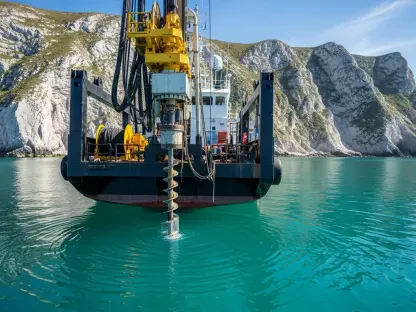The proposed onshore wind farm project in the south of the Isle of Man has incited a heated debate concerning its potential impact on the local wildlife, especially birds using the migratory routes passing through the area. The proposal involves installing four wind turbines at Earystane Plantation with the aim of fulfilling a quarter of the island’s annual electricity requirements, an initiative crucial for transitioning toward net-zero emissions. While renewable energy development is crucial, wildlife organizations and conservationists have raised alarms regarding biodiversity protection, citing a recent French court ruling against EDF Renewables for causing the deaths of 160 rare birds.
The Issue at Hand
The core of the controversy lies in the balance between pursuing energy independence and preserving wildlife habitats. Organizations like Cair Vie Resistance argue passionately that the project is misplaced, raising grave concerns over the potential disruption to avian life. Kirrie Jenkins from Cair Vie Resistance insists the French ruling should act as a “wake-up call” for the Isle of Man’s governing and utility bodies. With Earystane Plantation situated on a significant bird migratory path, the pressing issue is the unavoidable risk posed to bird populations and other key species. Such environmental considerations have fueled the argument that human aspirations for sustainable power sources should not come at an irreparable ecological price.
Evidence and Arguments
The debate around the wind farm proposal reflects broader tensions concerning renewable energy initiatives and biodiversity conservation. While Manx Utilities, a state-owned entity, contends that the project adheres to all necessary environmental assessments and applies mitigation strategies, skepticism persists. It continues to emphasize the imperative of sustaining energy independence while reducing reliance on imported fossil fuels to stabilize energy prices. Despite efforts to reassure stakeholders, conflicting interests challenge the adequacy of proposed measures. Maniak Jenkins advocates that ignoring the consequences of wind farm installations may lead to harming “irreplaceable species” and considers these actions rash and premature given the ecological sensitivity of the region.
Findings, Implications, and Next Steps
The investigation brought forward critical findings and underscored the struggle to balance renewable energy ambitions with wildlife preservation. Despite assurances by Manx Utilities about following due process, opposing voices call for heightened scrutiny concerning potential ecological repercussions. The tragic outcome in France highlights the importance of prioritizing rigorous environmental safeguards before any similar projects proceed. As the Isle of Man positions itself toward a greener future, stakeholders must acknowledge the delicate interplay between energy projects and wildlife habitats.
Going forward, it is crucial for the Isle of Man government and Manx Utilities to commit to transparent discussions and adaptive planning, integrating insights from independent ecological expertise. A forward-thinking approach may include refining policies and strategies that reflect emerging scientific knowledge, ensuring long-term preservation for both nature and sustainable energy solutions. Enhanced cooperation between industry leaders, wildlife groups, and community stakeholders could prove vital in crafting viable, less invasive approaches to progress, serving as a model for energy transitions elsewhere.









